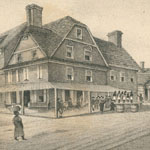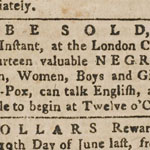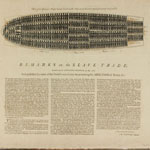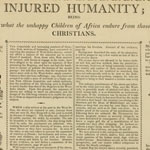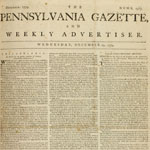From Slavery to Freedom in Pennsylvania
Antislavery opinion spread in the latter days of the revolution, driven by the many published appeals to popular religion, rationalist ideas of the rights of man, and revolutionary rhetoric equating the status of the colonies under British rule with slavery. In 1780 the radical Pennsylvania Congress passed the Gradual Emancipation Act, which, in spite of the self-congratulatory rhetoric, freed no one and was designed to minimally discomfort slaveholders. Under the act, all slaves born after March 1, 1780 would be free—at age twenty-eight. All slaves were to be registered, giving their date of birth. Any unregistered slave would become free. Slaves could not be imported, nor sold out of state. Slaves brought into the state would become free after six months, though prior to the six month limit masters could indenture them for several years.
Blacks paid close attention to the law and used it to their advantage. Many masters simply refused or failed to register slaves, and those slaves appealed to authorities and became free. Some masters from out of state ignored the six months provision, only to have local blacks inform their slaves of their freedom six months and a day later. And free blacks were helpful in encouraging and sheltering runaways. Black agitation and growing antislavery sentiment among many whites made slaveholding increasingly problematic and unprofitable, and many blacks, with the aid of white allies, negotiated their own indentures to attain a state of semi-freedom on their own terms. The impact of the black and white antislavery activism inspired by the Gradual Emancipation Act was profound. In 1780 there were about 6,855 slaves in the state, with some 539 in Philadelphia County. Ten years later there were about 3,760 slaves in the state and 301 in Philadelphia. By the century’s end, slavery was all but dead in Philadelphia, though it would linger in the state in ever declining numbers up to about 1847.
Click on images for a larger view.
